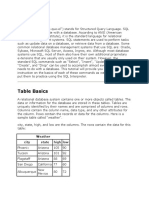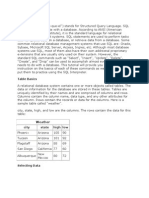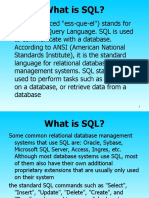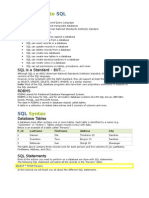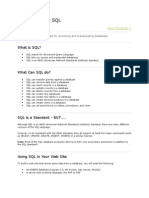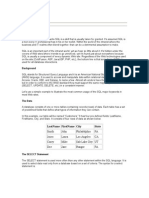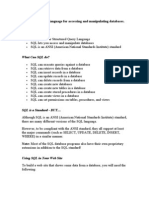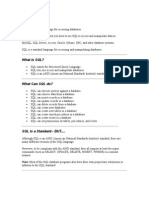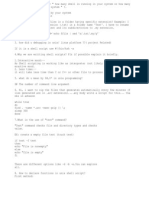0% found this document useful (0 votes)
72 views3 pagesWhat Is SQL
SQL is the standard language used to communicate with relational databases and retrieve or modify data. It uses statements like SELECT, INSERT, UPDATE, DELETE, and others. The SELECT statement is used to query databases and retrieve data that matches specified criteria. It selects columns from tables and can use conditions like equals, greater than, less than in the WHERE clause.
Uploaded by
ArslanShahidCopyright
© © All Rights Reserved
We take content rights seriously. If you suspect this is your content, claim it here.
Available Formats
Download as DOCX, PDF, TXT or read online on Scribd
0% found this document useful (0 votes)
72 views3 pagesWhat Is SQL
SQL is the standard language used to communicate with relational databases and retrieve or modify data. It uses statements like SELECT, INSERT, UPDATE, DELETE, and others. The SELECT statement is used to query databases and retrieve data that matches specified criteria. It selects columns from tables and can use conditions like equals, greater than, less than in the WHERE clause.
Uploaded by
ArslanShahidCopyright
© © All Rights Reserved
We take content rights seriously. If you suspect this is your content, claim it here.
Available Formats
Download as DOCX, PDF, TXT or read online on Scribd
/ 3

